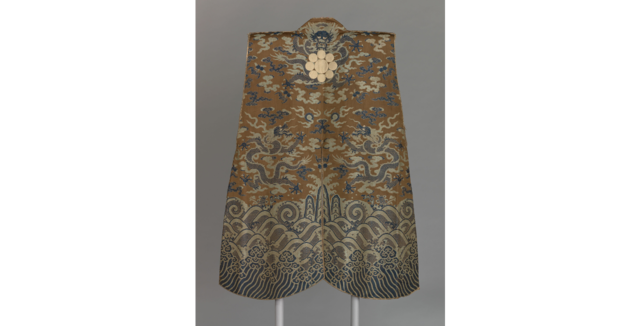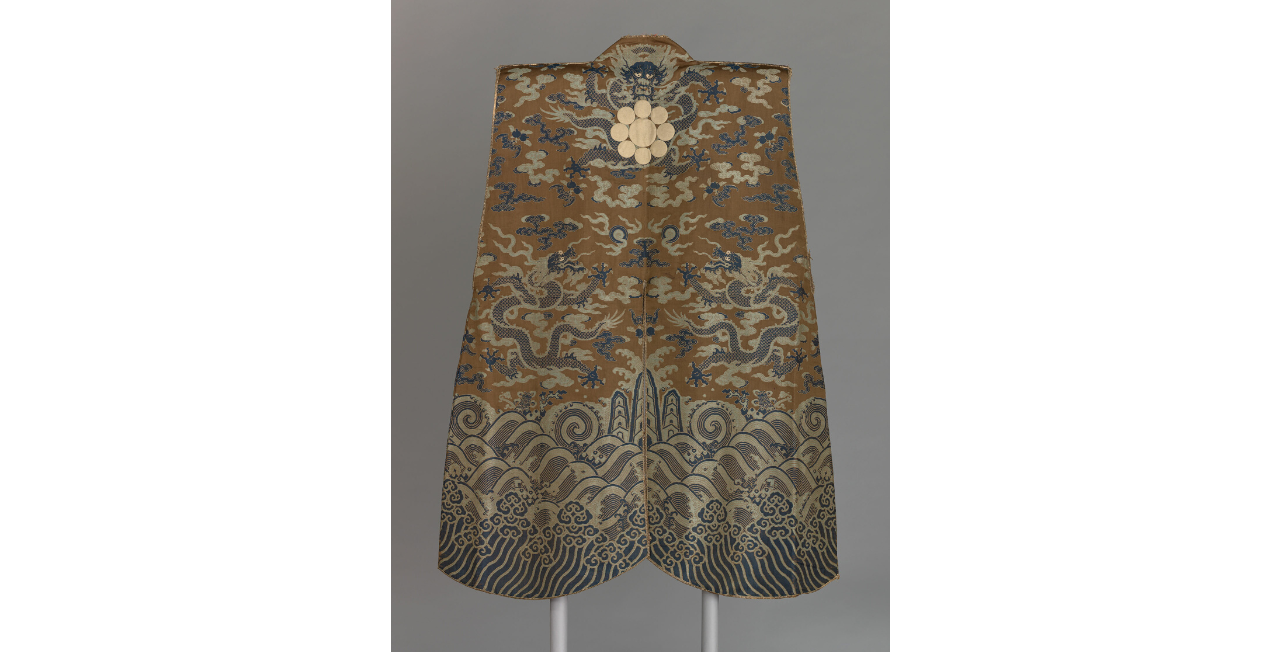Jinbaori (Surcoat), Edo period, c. 1750

Full description
Jinbaori surcoats would have been worn by high-ranking members of Edo’s samurai class over their armor to protect them against harsh weather conditions. These garments were sleeveless and tailored to allow the wearer to ride on horseback and layer over armor with ease. A samurai’s jinbaori not only acted as a layer of protection but also as a symbol of status, like most men’s fashion came to do during the Edo period. Here, the owner’s mon, or family crest, can be seen proudly displayed on the back of the garment – the nine golden circles represent the sun, moon, and other celestial bodies, act as the crest of the Hosokawa clan, who were a samurai clan that were made daimyo under the Tokugawa shogunate. Three dragons encircle the Hosokawa mon, symbolizing balance, freedom, and good luck, and along with this jinbaori’s intricate threadwork and gold-leaf elements, convey a message of the strength and power – both financially and militarily – wielded by the Hosokawa clan.
Ruby Barone. Image courtesy of the Art Institute of Chicago.
Comments
to view and add comments.
Annotations
No one has annotated a text with this resource yet.
- typeImage
- created on
- file formatpng
- file size636 kB


